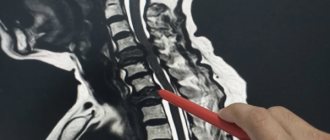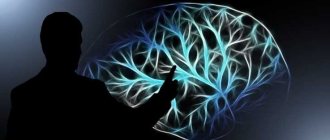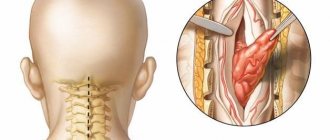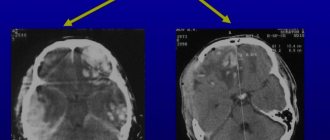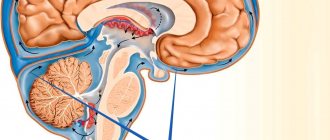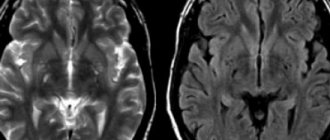On the issue of treatment
The choice of treatment regimen is made by the doctor, taking into account a visual examination, medical history and life of the patient (for a child - the course of pregnancy in the mother and the nature of childbirth), the results of instrumental research methods, often prescribed over time.
In addition, neuropsychological diagnostics are important for the doctor (especially if there are speech disorders). The chosen treatment methods are individual in nature and include neuropsychological and pedagogical areas.
If the initial stages of treatment do not produce a positive result, medications are prescribed , the main ones of which are tranquilizers, psychostimulants, and nootropics. Amphetamines (Ritalin, amitriptyline) have proven themselves well in treatment.
Treatment of children should be carried out against the background of a full fight against the disease in the family. These are routine moments, being in the fresh air, communication, educational activities, interesting and educational leisure. In case of accompanying complaints, the doctor may prescribe symptomatic treatment. However, it is possible that such symptoms will subside as the underlying cause is treated.
The diagnosis of “dysfunction of midline structures” can be called topical, since it clearly indicates the location of the pathological change in the brain. You can hear the opinion that it does not reflect the clinical picture of the disease, because the nature of the brain is being learned more and more deeply every day. And such a diagnosis as, for example, “minimal brain dysfunction”, like “subcortical dysfunction”, is completely absent in the tenth international classification of diseases. Time will tell, but today for neurologists this concept reflects the cause of certain clinical manifestations and gives the right to prescribe appropriate treatment.
A little anatomy
According to the term, “dysfunction” is nothing more than a violation of any function of the body. In this case, brain stem structures. What is the brain stem? This refers to an anatomical formation that is responsible for almost all vital functions of the body. That is, the trunk is involved in the processes of heartbeat, thermoregulation, respiration, digestion and others. When situations arise in which the patient’s brain receives some kind of injury, for example, during childbirth, as a result of a bruise, a concussion, the trunk is also affected. This is where various malfunctions of its functions occur. However, they may or may not have pronounced clinical signs. In the second case, it is necessary to identify violations using special research and diagnostic methods.
When there is a suspicion that brainstem functions have been disrupted, in most cases a computed tomography scan is prescribed. This research method makes it possible to detect dysfunctions of the brain, including brain stem functions, as a result of layer-by-layer imaging. In some cases, the use of computed tomography is avoided; this usually applies to cases where there are no grounds indicating a brain injury.
In this situation, it is recommended to conduct an electroencephalogram. This is a type of study in which electrical impulses from the brain are recorded and evaluated. When the stem structures are damaged, it is often possible to detect irritation of the stem, which indicates irritation of one of the parts of the brain.
Types of dysfunction
There are several types of pathologies in the functioning of the brain. The division into groups will depend on which department has the dysfunction or the disruption in work as a whole. Among them:
- Diencephalic. This structure is responsible for human sleep, as well as appetite. Thanks to it, normal human body temperature is maintained and there is no disturbance in metabolic processes.
- Stem. This structure helps regulate basic life processes such as breathing, tone and appetite.
- The medians help vegetative processes in the nervous system, and are also responsible for the emotional state of a person.
The normal functioning of all these departments guarantees that a person is healthy and in a normal psycho-emotional state. But if a disorder is observed somewhere, then you need to urgently contact a neurologist so that he can make a diagnosis and prescribe treatment.
Prevention and prognosis
The prognosis of diencephalic syndrome is ambiguous. It depends on the characteristics of the pathology that became its root cause. Persistent and irreversible changes in the hypothalamic-pituitary region cannot be eliminated with conservative therapy. In most cases, it only allows to reduce the negative manifestations of the syndrome. The course of the pathology is persistent and recurrent. Restoration of endocrine functions in women and men lasts an average of a year. Diencephalic syndrome caused by a tumor or severe neurotrophic disorders also has a poor prognosis. In other cases, a stationary state of the process or slow improvement is observed.
A certificate of incapacity for work is issued to persons with this disease for 2-3 weeks, during which they undergo inpatient treatment or intensive therapy on an outpatient basis.
Clinical recommendations from specialists:
- constant monitoring by the attending endocrinologist,
- implementation of all his recommendations,
- receiving maintenance therapy,
- compliance with the work and rest schedule,
- full sleep,
- balanced diet that normalizes body weight,
- optimal physical activity,
- timely sanitation of foci of infection,
- increasing the overall resistance of the body,
- preventive use of sedatives and tranquilizers.
Diencephalic syndrome is a serious disorder that affects the functioning of the entire body. This pathology is treated by specialists in the field of endocrinology, linking it with hypothalamic-pituitary hormonal disorders. Complex therapy allows you to eliminate various symptoms of the disease, activate the nervous and immune systems, and restore the functioning of the endocrine glands. If the syndrome is not treated correctly and in a timely manner, it will lead to disability of patients.
Diencephalic dysfunction
First of all, it affects the intermediate parts of the brain, or rather, begins to affect them. When observing such a disorder, a person experiences:
- decreased sensitivity in the body.
- a decrease in the pain threshold, as well as the development of thalamic pain.
- intention tremor.
- a quick and causeless change from tears to laughter and vice versa.
- endocrine disorders.
This dysfunction is considered one of the most common diseases that characterize neurology. Usually the most striking representative is vegetative-vascular dystonia. The disease occurs in a third of the population and is especially common in women.
Dysfunction is treated with various medications and radiotherapy. Special diets may sometimes be used for medicinal purposes.
Dysfunction of midline brain structures
The work of this department is aimed at the proper functioning of the autonomic nervous system in the human body. Dysfunction of the midline structures of the brain is characterized by disruption of night sleep and a person’s psycho-emotional state. This usually happens due to various types of injuries that occur as a result of a fall, blow, or during rehabilitation after them.
Symptoms of dysfunction of nonspecific midline structures are characterized by the following facts:
- decreased sensitivity (this is observed on the face or torso).
- decreased sensitivity to pain.
- rapidly changing crying or laughing.
- rapid puberty.
- endocrine disorders.
When diagnosing dysfunctions of the midline structures of the brain and prescribing treatment, the neurologist must take into account the characteristics of conscious and unconscious behavior and human health in order for the therapy to be as effective as possible.
Brain Features
The trunk is the formation responsible for the vital functions and health of the body. It is located in the human brain. Among the most important body systems for which this structure is responsible are:
- cardiovascular.
- respiratory.
- heat exchange.
- digestive.
But there are often cases when a person gets injured and suffers harm to health. In this case, the brain or spinal cord may also be damaged, as a result of which it ceases to function normally and correctly. This usually happens due to an accident where an injury occurred or a bruise occurred that resulted in a concussion. Today, there are frequent cases of injury during difficult childbirth.
Disturbances in the functioning of the brain will be clearly expressed clinically or they can be diagnosed through special tests.
Brainstem dysfunction
Dysfunction of brain stem structures is one of the most dangerous pathologies for human life and health. Since the trunk is responsible for the most important systems in the body, such as the cardiovascular and respiratory, the development of pathologies in these centers can manifest itself as follows:
- the vocal cords lose their function and weaken.
- difficulty swallowing.
- speech apparatus disorders. In this case, difficulty in perceiving speech develops, as well as impairment of writing and reading abilities.
Dysfunction of brain stem structures is diagnosed in the following ways:
- Computed tomography allows you to fully examine the affected areas. It is based on x-rays. After the examination, the doctor receives very high quality images, from which the condition of the brain and its structures can be determined. CT helps not only to find the source of pathology itself, but also to establish the possible cause of its appearance.
- Electroencephalography can monitor the state of the brain as a whole, as well as its proper functioning.
The signs of this dysfunction are reversible and can be removed in a few visits to a specialist. This happens due to the restoration of brain functions, the active activity of which returns after normalization of blood circulation.
